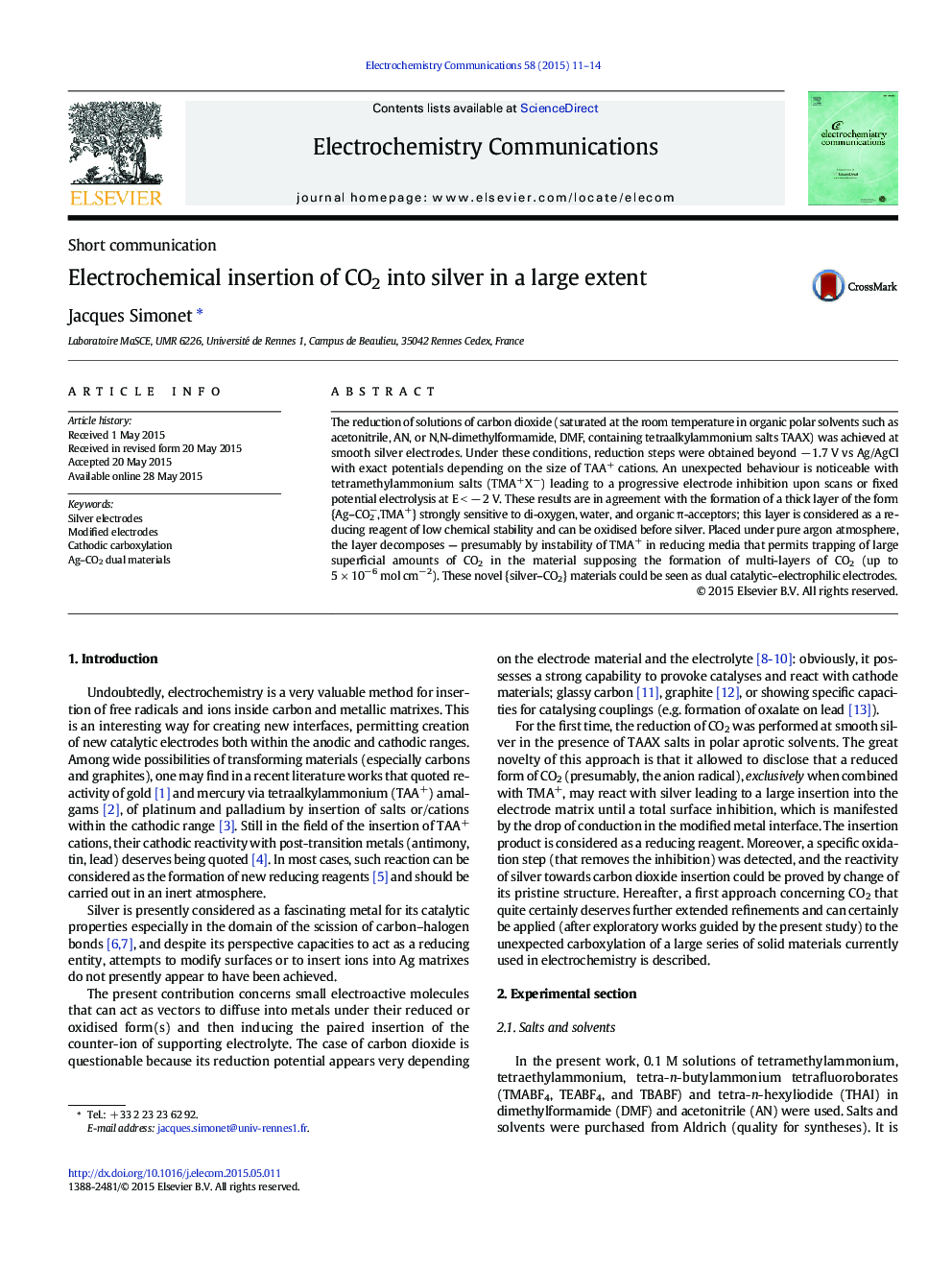| Article ID | Journal | Published Year | Pages | File Type |
|---|---|---|---|---|
| 178796 | Electrochemistry Communications | 2015 | 4 Pages |
•Large electrochemical insertion of carbon dioxide in massive silver•Surfacial decoration versus mass modification•Ag–CO2− electrolyte cation transient for a new solid material•Specific use of tetramethylammonium salts for a successful mass carboxylation•Stocking CO2 with evolving under anodic electron transfer
The reduction of solutions of carbon dioxide (saturated at the room temperature in organic polar solvents such as acetonitrile, AN, or N,N-dimethylformamide, DMF, containing tetraalkylammonium salts TAAX) was achieved at smooth silver electrodes. Under these conditions, reduction steps were obtained beyond − 1.7 V vs Ag/AgCl with exact potentials depending on the size of TAA+ cations. An unexpected behaviour is noticeable with tetramethylammonium salts (TMA+X−) leading to a progressive electrode inhibition upon scans or fixed potential electrolysis at E < − 2 V. These results are in agreement with the formation of a thick layer of the form {Ag–CO2−,TMA+} strongly sensitive to di-oxygen, water, and organic π-acceptors; this layer is considered as a reducing reagent of low chemical stability and can be oxidised before silver. Placed under pure argon atmosphere, the layer decomposes — presumably by instability of TMA+ in reducing media that permits trapping of large superficial amounts of CO2 in the material supposing the formation of multi-layers of CO2 (up to 5 × 10− 6 mol cm− 2). These novel {silver–CO2} materials could be seen as dual catalytic–electrophilic electrodes.
Graphical abstractFigure optionsDownload full-size imageDownload as PowerPoint slide
